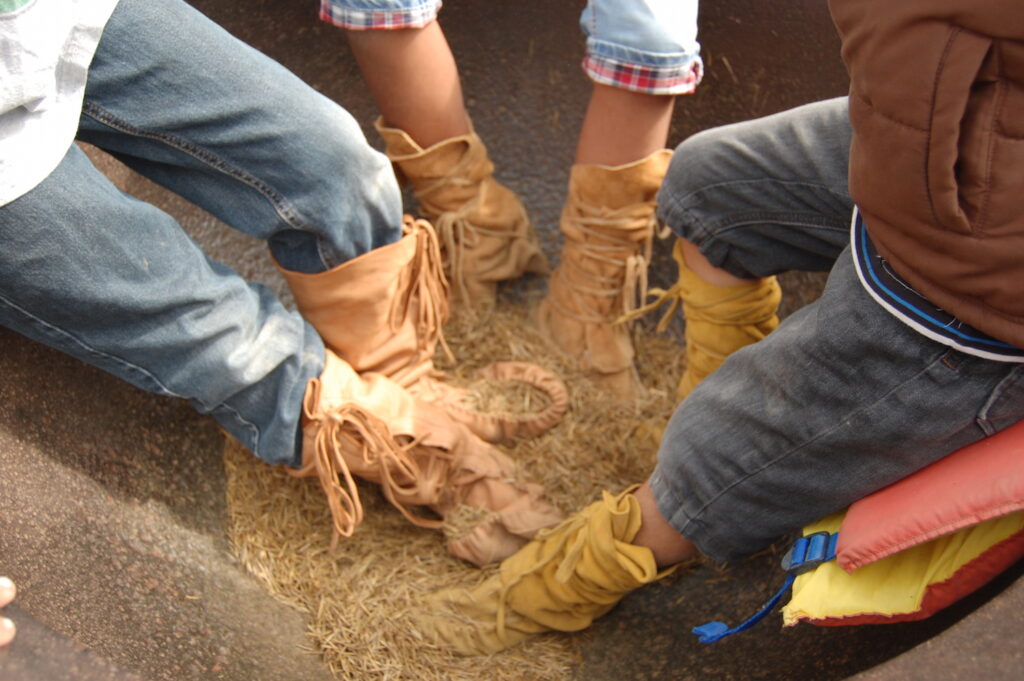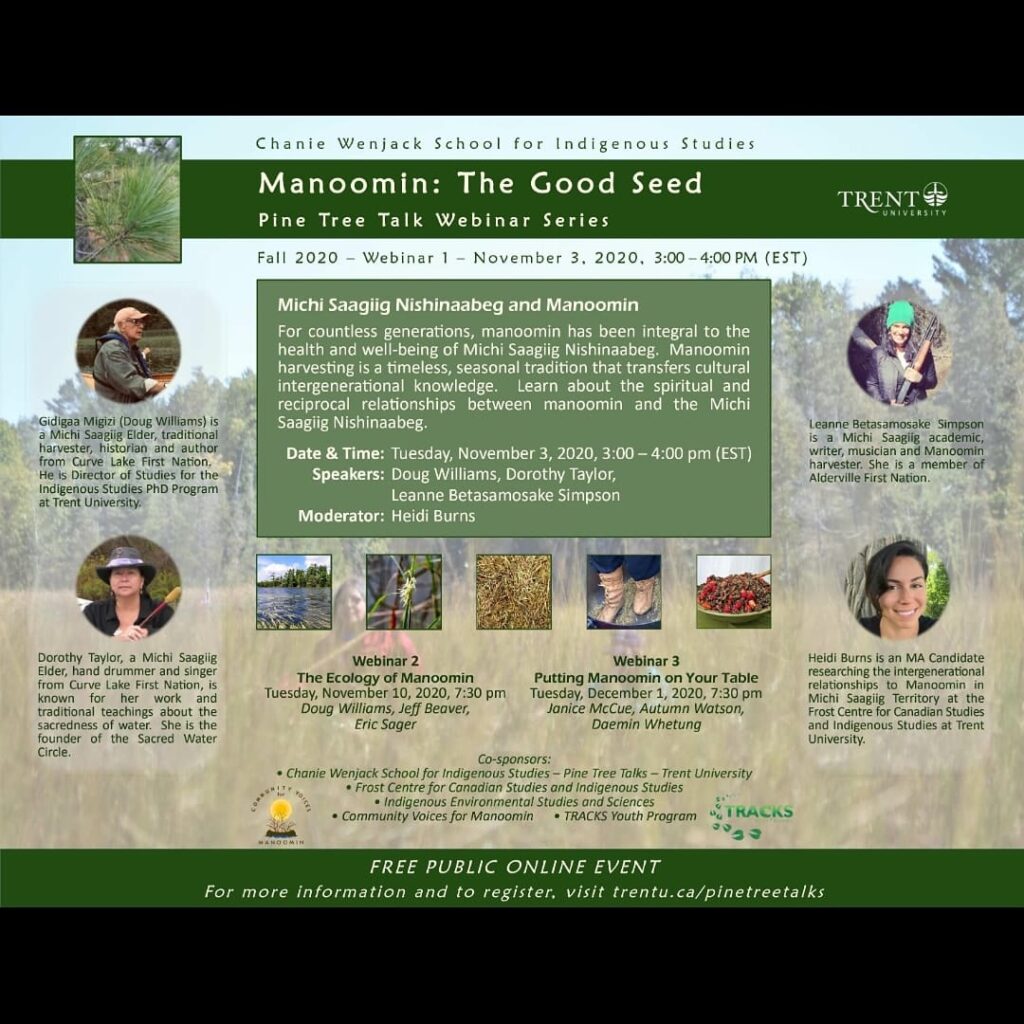Many people associate the local food movement with food grown on farms, but in reality plenty of food is foraged, sourced and harvested from waterways locally in Nogojiwanong and across the world.
One such food with particular cultural, historical and culinary significance in our region is Manoomin, an Anishinaabeg word meaning the “good berry”, known to some as wild rice. For countless generations, manoomin has been integral to the health and well-being of Michi Saagiig Nishinaabeg. Manoomin harvesting is a timeless, seasonal tradition that transfers cultural intergenerational knowledge. Learn about the spiritual and reciprocal relationships between manoomin and the Michi Saagiig Nishinaabeg (Pine Tree Talks)

There is a great upcoming Pine Tree Talk series, called Manoomin: The Good Seed, hosted by Trent University. This three-part webinar series aims to provide foundational information about Anishinaabe Manoomin (wild rice) and its importance in the territories of the Michi Saagiig Nishinaabeg. Even though manoomin has been growing in the Kawarthas for at least 4,000 years, many people know little about this nutritious seed and its current revitalization in local waterways.

Check out this great video by local film-maker Brian Mitolo featuring James Whetung of Black Duck Rice to learn more about the process of growing and harvesting manoomin
Anishinaabe Manoomin (Northern Wild Rice) is an ecologically vital freshwater plant species, a key element of Anishinaabeg traditions, health and economy, and a culturally sacred, sustainable food source. The health and protection of Anishinaabe Manoomin is critical to the Kawartha Lakes ecosystem and the broader Great Lakes watershed. The Indigenous Peoples of this territory, the Michi Saagiig and Chippewa Anishinaabeg, have inherent responsibilities and rights to protect, restore, and revitalize their relationships with Manoomin. These include their own ecological, cultural, and economic food systems, which predate colonial settlement in all townships where Manoomin beds exist today or have existed (including in the County of Peterborough, City of Kawartha Lakes, and Northumberland County). To learn more about the importance of Manoomin & to sign on to help protect, it check out this Declaration for the Protection of Manoomin